Culture and Heritage
Welcome to the Herzegovina Wine Route, where stunning landscapes, unique culture, and world-class wines combine to offer a memorable experience for wine and culture enthusiasts alike.
This picturesque region showcases the best of Bosnia and Herzegovina, from the breathtaking views in Mostar to the historic charm of Trebinje, Ljubuški with the oldest museum in Bosnia and Herzegovina, religious and pilgrimage sites, and UNESCO sites like the Old Bridge and Radimlja necropolis.
The Herzegovina Wine Route is home to a vibrant wine and religious heritage, with iconic places to explore such as the pilgrimage site in Medjugorje, the Tekke in Blagaj, and the monasteries around Trebinje. Other highlights include the Tvrdos Monastery, the Rabi Moša Danon site in Stolac, and the numerous vineyards that dot the landscape. Whether you’re looking to explore the region’s spiritual side or its winemaking traditions, the Herzegovina Wine Route offers a unique insight into the culture and history of the region.
HWR
Culture and Heritage
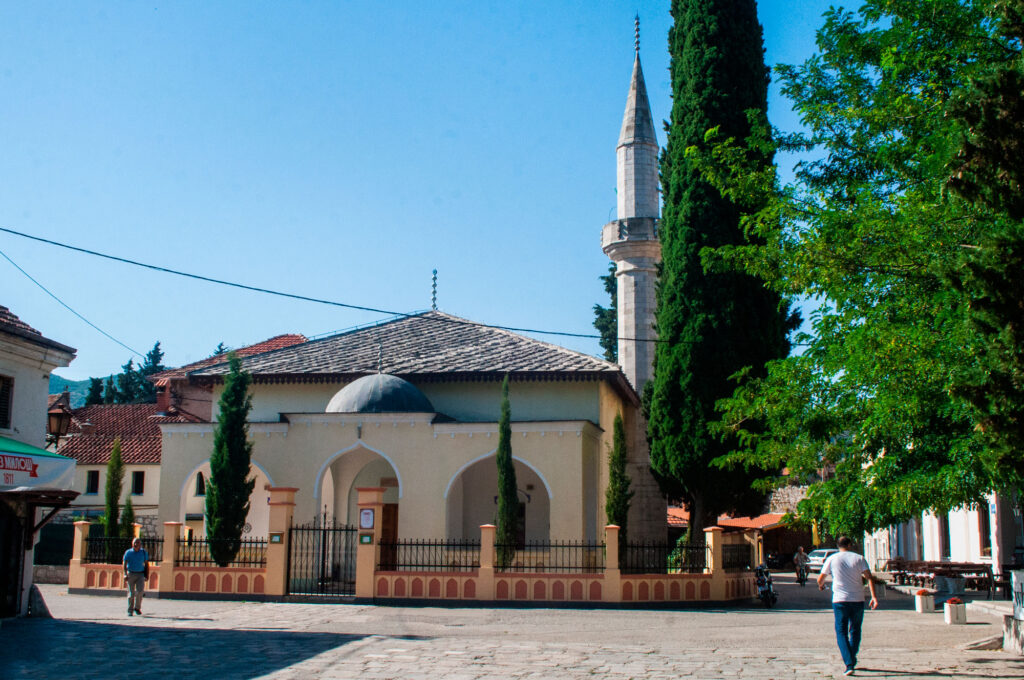
Osman Pasha Mosque
This mosque is located in the Old Town (Kastel) , not far from the main (western) gate and city ramparts. It was built of hewn stone and covered with a four-pitched roof in imitation of a dome under eternite. A stone minaret of octagonal shape, 16 m high, was built along the right wall and was one of the most beautiful in Herzegovina. It was built in 1726 and is the endowment of Osman Pasha Resulbegović. The builders were masters from Dubrovnik. There are elements of Mediterranean architecture in its construction. It is famous as the most spacious mosque in Herzegovina. Before the war, it was a cultural monument under state protection. Osman Pasha built a mekdeb and a madrasah near the mosque, which were the first educational institutions in Trebinje. After the construction of the mosque, Osman Pasha was accused in Istanbul of having built a more beautiful mosque than the emperor’s in his own name in Trebinje . Because of this, Sultan Ahmed III issued an order condemning him and his nine sons to death. Osman Pasha Resulbegović went to Istanbul to beg for pardon, but his was refused, and he was executed in 1729.

Ottoman town district in Stolac
In the center of the Stolac valley lies the čaršija (Ottoman central town district) and in its own centre the Čaršija mosque with the Great tepa (market square). The Čaršija mosque was built in 1519 and represents the oldest larger building in the čaršija of Stolac. Next to the mosque there was a mekteb (Ottoman religious school) and around the mosque a harem (Muslim cemetery), while the čaršija was fully structured by the shops surrounding the mosque. The most significant building in the čaršija was the han or musafirhana (Ottoman inn) built by Silahdar Husein-paša. The čaršija of Stolac was a central, public town square where imperial orders were read, public trade was conducted and other public communication was carried out, such as reading of court rulings or calls to wars.
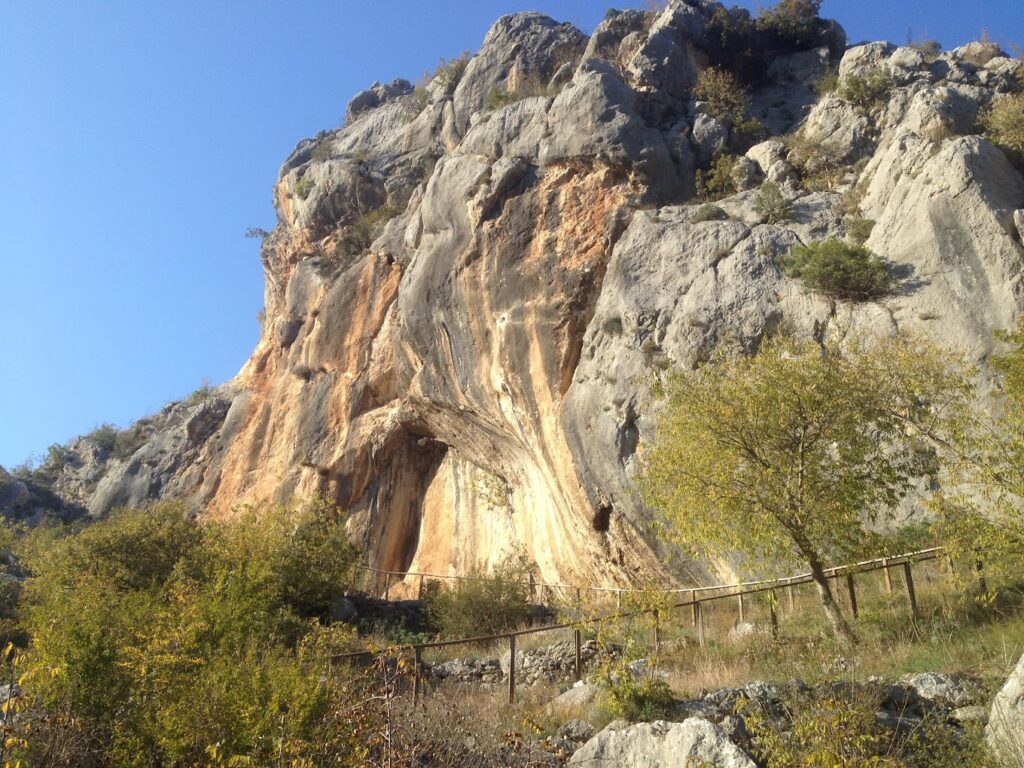
Palaeolithic site of Badanj
Badanj is an important Paleolithic site located near Stolac, Bosnia and Herzegovina. It was discovered in 1976 and is dated to the late period of the Younger Paleolithic, around 13,000 to 12,000 BC. The site consists of a multi-layered cave where periodic activities of Paleolithic homo sapiens took place. The upper layer revealed 20 cultural and geological layers belonging to the Late Paleolithic – Epigravettian. The fauna and artifacts found suggest that small groups or communities of 10-15 people lived there periodically, engaging in activities such as hunting, tool-making, and food preparation. The most significant discovery at the site is an engraved drawing of a horse, representing one of the oldest art monuments in Bosnia and Herzegovina. Similar engravings are found in other Mediterranean regions, indicating communication and artistic expression during that time.

Petro-Pavlov monastery
The area around today’s monastery of St. Apostles Peter and Paul, together with the stećak necropolis, is an area that has been declared a national monument of Bosnia and Herzegovina since March 2003. It is located 7 km southeast of Trebinje in Petrovo polje. It includes the remains of the church of St. Peter (IV century), which are located below the present church, built in 1906, and the remains of the church of St. Pavle (V century), renovated in 2007. Today’s church of St. Petra is typical for this climate, with a simple foundation and modest dimensions, with an apse covered with stone slabs, as well as a tiled interior and a wooden iconostasis. Church of St. Pavla is located directly next to the church of St. Petra, on its southern side. According to the available archival materials and archaeological finds, it is believed that this church served as a congregational temple where services were held, while the trikonchos with the baptismal font (discovered in 2001) dedicated to the Apostle Paul was used for baptisms and burials of believers.
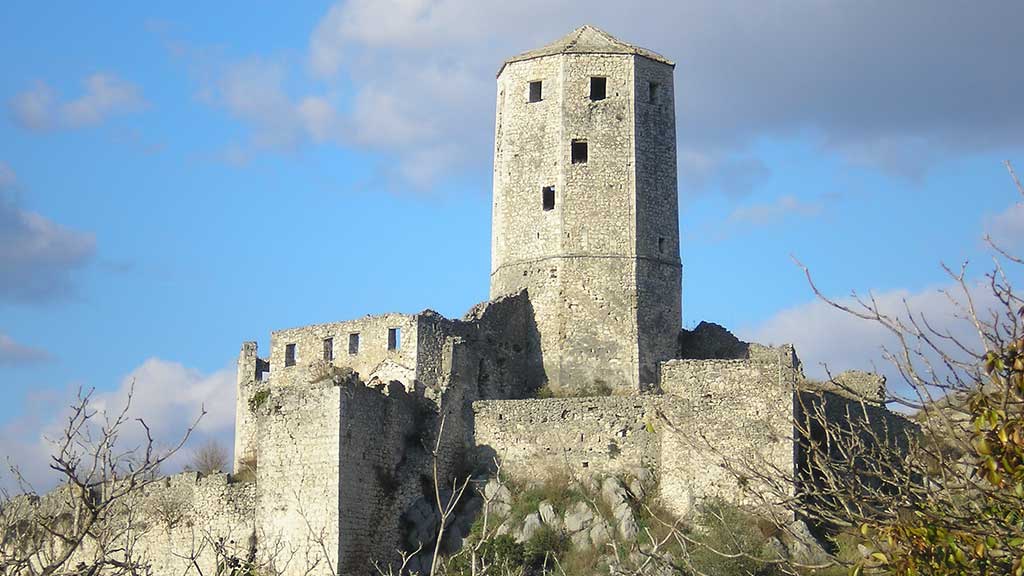
Počitelj
Počitelj is dominated by oriental building styles, which with a mixture of Mediterranean style give this settlement a special dimension. It was mentioned for the first time in written documents in 1444, as the seat of the parish of Dubrava. It is assumed that the builder of the fortified city and the founder of the suburban settlement was the Bosnian king Tvrtko I. Kotromanić in 1383. In the coming period, for the purpose of defense against the conquest of the Turks, the Hungarian-Croatian King Matthias Corvin, together with the local nobility, established Počitelj with the financial support of the Republic of Dubrovnik. The Turks conquered Počitelj in 1471, when it became the headquarters of the captaincy. With the Venetian conquest of Gabela in 1694, Počitelj took over the previous role of a border center, which Gabela had, and kept it until the 19th century.
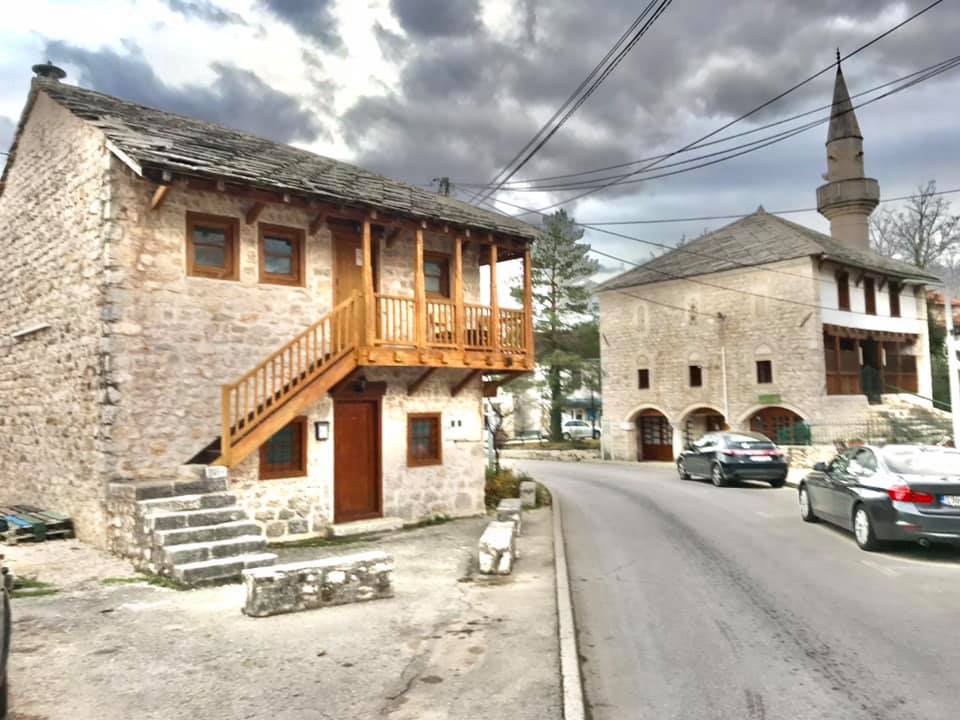
Podgradska čaršija
The area between the Podgrad bridge and the Podgrad mosque, known as Mejdan or Little Čaršija, was historically used for trading agricultural goods, clothes, and various products. The mosque, rebuilt and renovated multiple times, had different names like Mejdan mosque, Hadži Salih Bure mosque, Zulfikar-kapetan mosque, or Ali-paša Rizvanbegović mosque. It stands on an island between two Bregava river inlets, featuring three shops with arched entries facing the čaršija. Similar to the Suleymani mosque in Travnik, it is supported by pillars above the shops, a rare characteristic of mosques with integrated shops. The mosque’s construction reflects Mediterranean architectural influences. Opposite to the mosque stood the Muftića han (inn) and various shops for traders and craftsmen, now known as Konak, serving as a hostel and youth club. Across the river, the Turković tower rises, believed to have been built in stages between the XVII and XVIII centuries. Initially a Rizvanbegović family residence, it became part of the Turković family’s dowry, representing a unique blend between a feudal tower and an urban house.
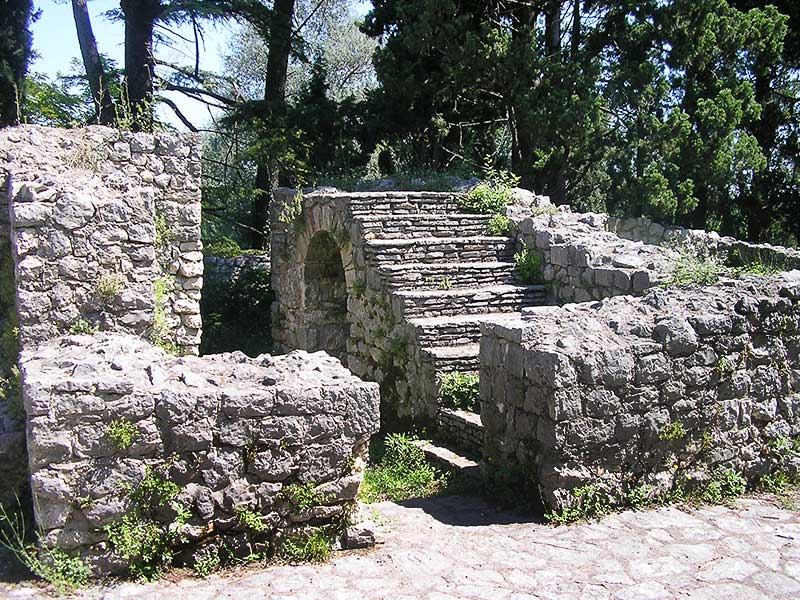
Antique Villa Mogorjelo
Mogorjelo is one of the most important monuments of the Roman era in Bosnia and Herzegovina and belongs to the most beautiful buildings of late antique architecture. Mogorjelo supplied the Roman city of Narona and probably served in the defense of the city and its surrounding, a dense grove of coastal trees (cypress) gives this monument a particularly beautiful frame. The building was excavated between 1889 and 1903, and in the following years it was conserved, being declared as a national monument in 2002.

Apparition Hill and the Blue Cross
Apparition Hill and the Blue Cross in Medjugorje hold profound spiritual significance for millions of pilgrims worldwide. Medjugorje is a renowned pilgrimage site where, since June 1981, six young visionaries have reported regular apparitions of the Virgin Mary. Apparition Hill, or Podbrdo, is the site where the first apparition allegedly occurred, drawing countless devotees seeking solace, healing, and spiritual renewal. On the other hand, the Blue Cross, situated at the base of Apparition Hill, has become a place of intense prayer and reflection, where visitors meditate on the sufferings of Christ and present their intentions to the Virgin Mary. Both sites have become symbols of hope and faith, attracting people from various backgrounds to seek divine encounters and experience the transformative power of Medjugorje’s spiritual atmosphere.

Antique Villa Mogorjelo
Mogorjelo is one of the most important monuments of the Roman era in Bosnia and Herzegovina and belongs to the most beautiful buildings of late antique architecture. Mogorjelo supplied the Roman city of Narona and probably served in the defense of the city and its surrounding, a dense grove of coastal trees (cypress) gives this monument a particularly beautiful frame. The building was excavated between 1889 and 1903, and in the following years it was conserved, being declared as a national monument in 2002.

Apparition Hill and the Blue Cross
Apparition Hill and the Blue Cross in Medjugorje hold profound spiritual significance for millions of pilgrims worldwide. Medjugorje is a renowned pilgrimage site where, since June 1981, six young visionaries have reported regular apparitions of the Virgin Mary. Apparition Hill, or Podbrdo, is the site where the first apparition allegedly occurred, drawing countless devotees seeking solace, healing, and spiritual renewal. On the other hand, the Blue Cross, situated at the base of Apparition Hill, has become a place of intense prayer and reflection, where visitors meditate on the sufferings of Christ and present their intentions to the Virgin Mary. Both sites have become symbols of hope and faith, attracting people from various backgrounds to seek divine encounters and experience the transformative power of Medjugorje’s spiritual atmosphere.

Archaeological site Gabela
Gabela is a national cultural monument of Bosnia and Herzegovina. Due to its strategic location, Gabela was also inhabited in Roman times, from which we have the remains of a brick factory and farm buildings on the outskirts of the town. Of the large number of medieval buildings, the remains of the old fort and a stone plaque with a large winged lion, the symbol of the Republic of Venice, are the most impressive to this day. Gabela was from the 15th to the 18th century a large trading center, but also an important strategic fortress on the Venetian-Turkish border. At one time it was known as the slave square. Various political and economic interests were competing for supremacy over Gabel. The Turks occupied it in 1477, and after several failed attempts in 1694, the Venetians occupied Gabela, then with the Peace of Požarevac in 1718, Gabela belonged to the Turks, and the Venetians demolished all the important buildings. Gabela is again under Turkish administration, but without its former power. During the Austro-Hungarian rule and the construction of the narrow-gauge railway, Gabela was a junction from Sarajevo to Dubrovnik and Metković. The Mexican scientist Roberto Salinas Price developed a hypothesis based on geographical information in the Iliad that the Trojan War was in the valley of the Neretva River, that is, that Gabela was Ilios, the capital of the state of Troy.